Midterm_Lamp
CONCEPT / DESIGN GOAL
Even if the last leaf falls
I made a tree with a leaf, and attached flower origamis as a metaphor for a hope. Even if the last leaf falls, there are still flowers which never fall even with bright lights on
‘Never give up, I will pray for you, grandma.’
If I can go back to the certain moment, I definitely would like to return to just before my grandmother had conscious when she was alive.
I missed the chance to say goodbye to her, and I couldn’t endure the despair not telling her anything. I should have given hope to her and had a lot of conversations with her.
Whenever I remind the regretful moment, I conjure up the novel ‘The last leaf’.
This story is about giving a hope by drawing a leaf which deceives a person to think it real, on the wall to a person coming down with pneumonia, and being close to death.
Referring to this story, I made a tree with a leaf, and attached flower origamis as a metaphor for a hope. Even if the leaf falls, there are still flowers which never fall even with bright lights on.
To show the respect to my grandma and my sincere pray for her, I displayed the lights fade in and out smoothly.
AUDIENCE
I created the lamp for my lovely grandmother who is not here anymore.
DESIGNED INTERACTION
When the last leaf falls, the lights inside the flowers will turn on, otherwise, they will stay off. I intentionally made flower origamis instead using real flowers to show something immortal, and forever in order to give a hope to my grandma.
I used the arduino to generate natural fade in/out effects right after the leaf fell off the tree in order to not giving her any chance to notice that the leaf’s falling.
Prior art and precedents that inspired your design and direction
I got an inspiration from the novel ‘The last leaf’ by O. Henry published in 1907.

SKETCH 1
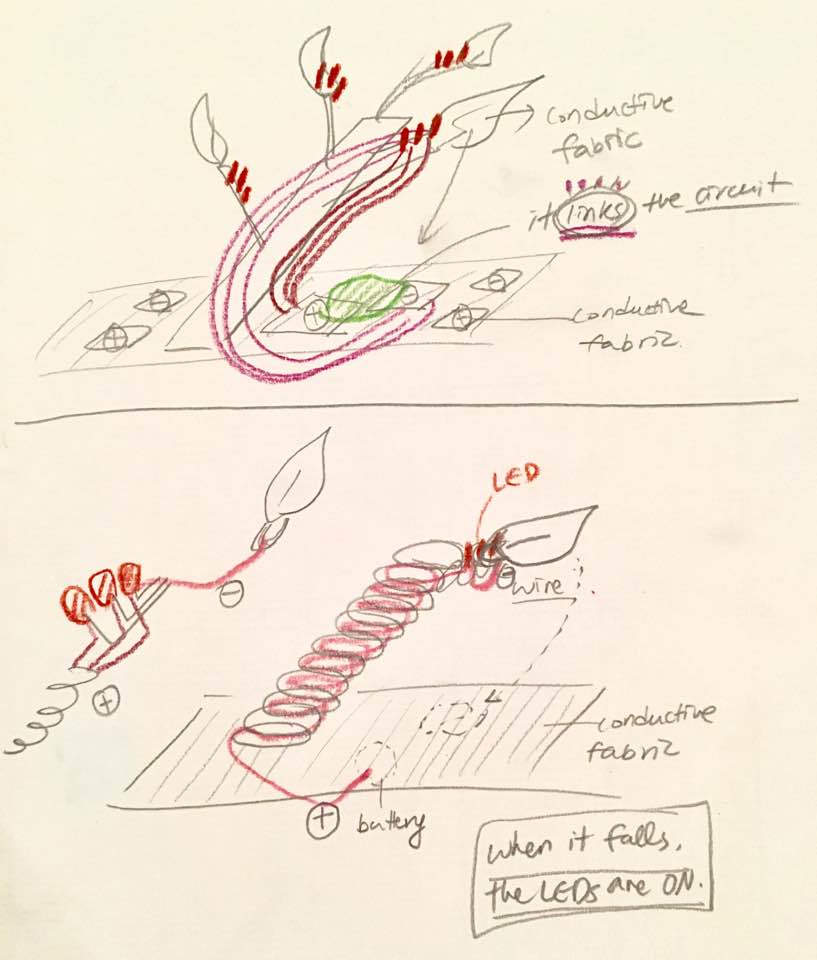
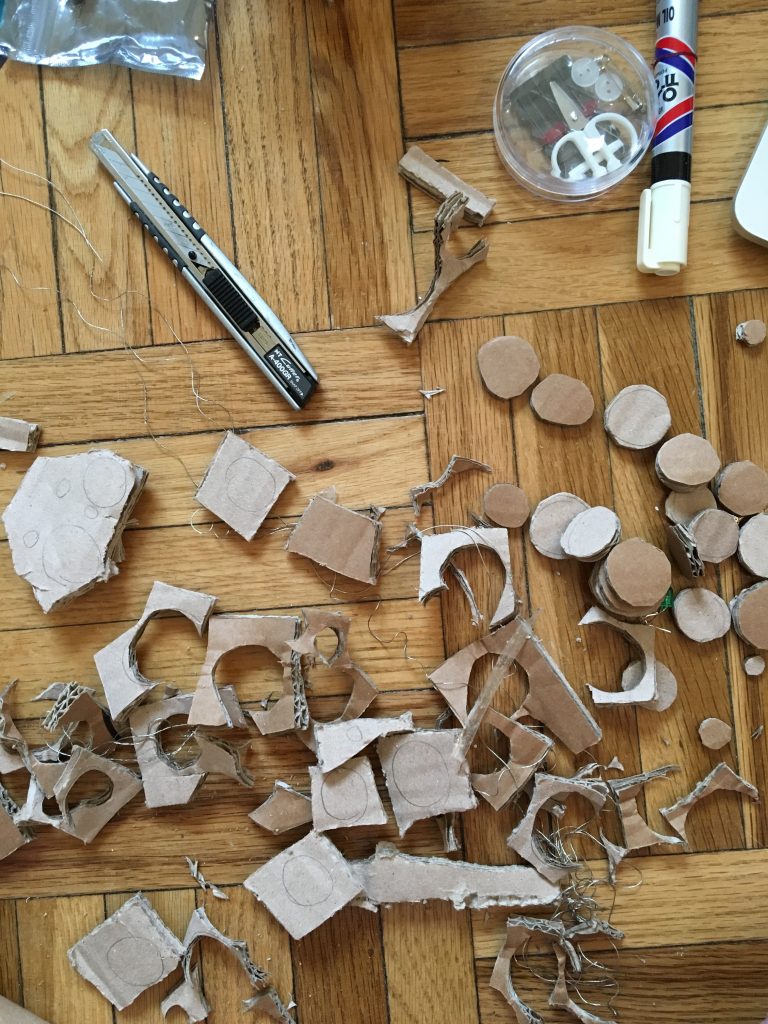
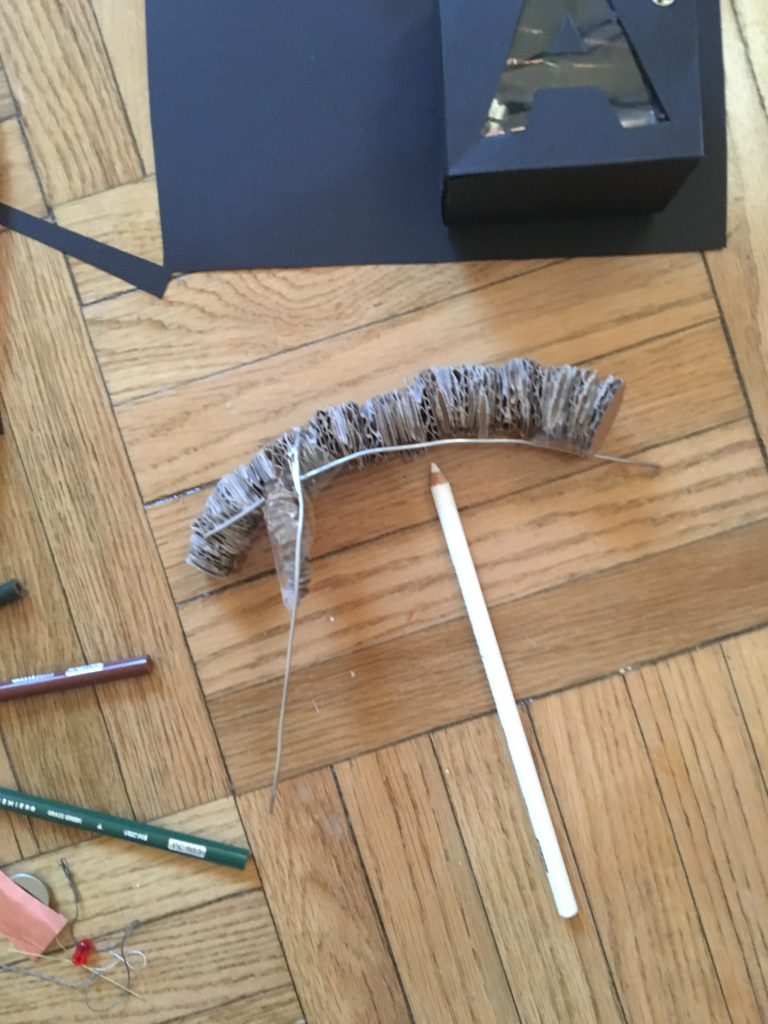
My initial design were two directions, but the basic principles are the same. First option was putting the conductive fabric on the floor with a battery beneath it which is linked with (+)side of LED. When the leaf which is connected to the LEDs’ (-), touches(falls) the fabric, the circuit is completed. The other was lying both (+), (—) patches which are linked to the LEDs on the floor, and then when the leaf(switch) falls on both(+,—) surfaces, the circuit is closed, and the lights turn on.
FINAL SKETCH / CIRCUIT
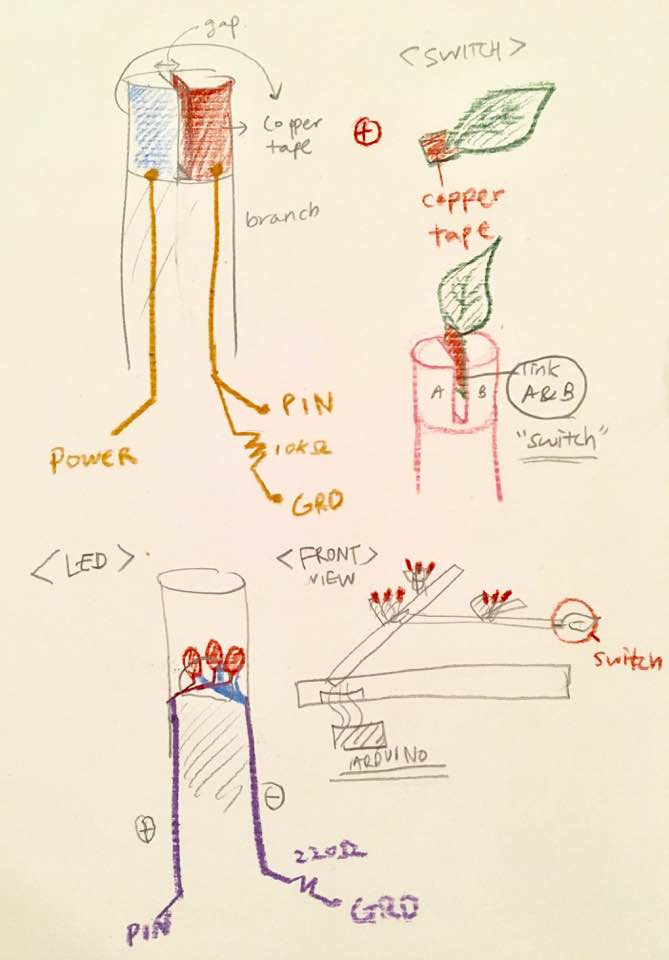
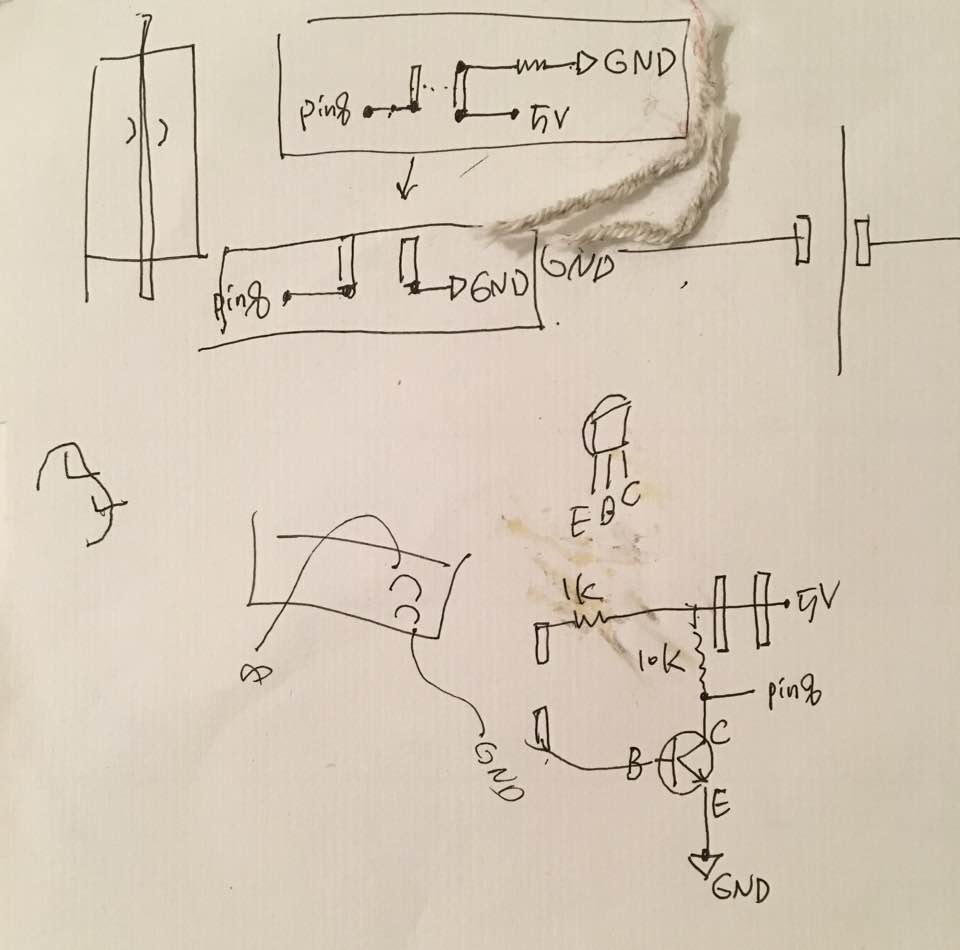
Design Process
1. Made a structure of the tree by woodcraft
2. Cut the middle of the top of the branch to divide into two in order to construct a part of a ‘switch’.
3. Put a copper tape on the each inside of the separated parts.
4. Made another part of a switch which link the two divided circuits (On/Off)
5. Made flower origamis
6. Installed the LEDs (Parallel circuit) liked with conductive threads, some resistors.
7. Chiseled the hole to link the wires to the arduino (LED fade in/out)
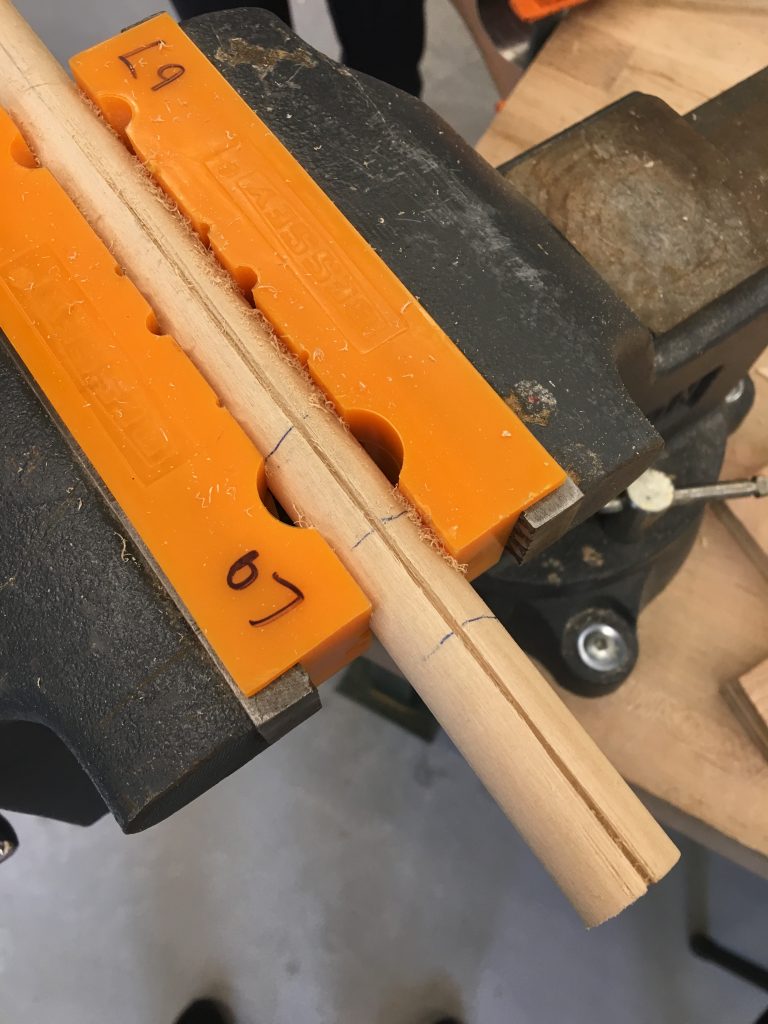
I chiseled to create a gap to disconnect the circuit, and linked each side to power & ground with conductive threads.
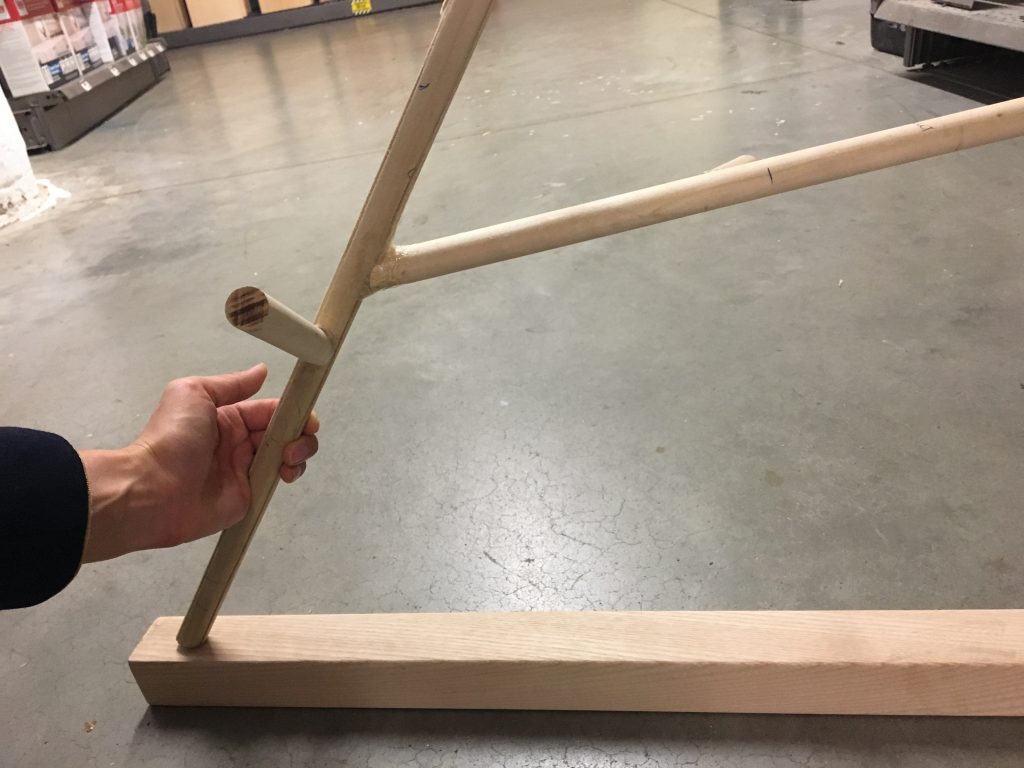

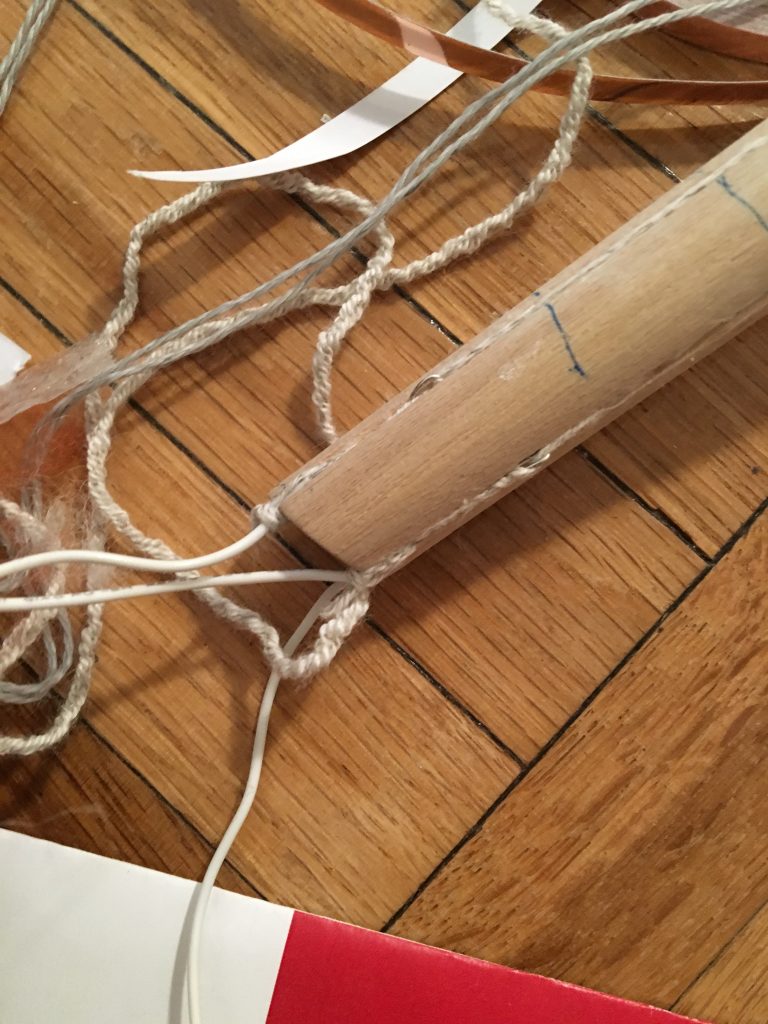
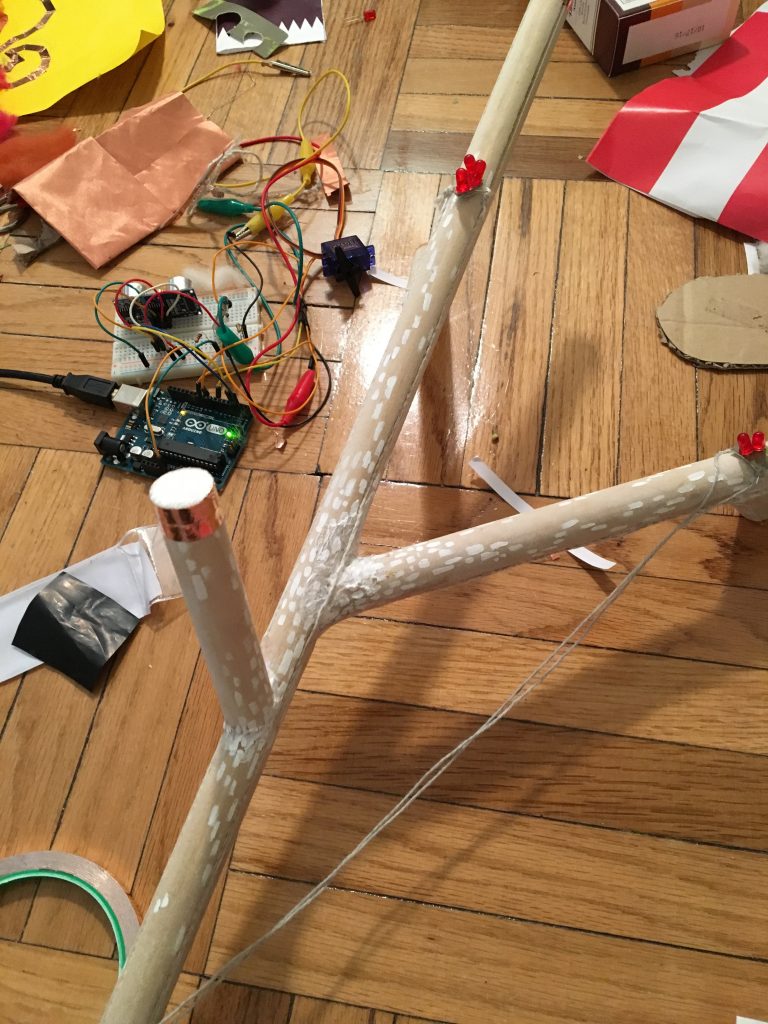
Codes
int button = 8;
const int ledOne = 9;
const int ledTwo = 10;
const int ledThree = 11;
int fadeAmount = 2;
int brightness = 0;
void setup()
{
pinMode(ledOne, OUTPUT);
pinMode(ledTwo, OUTPUT);
pinMode(ledThree, OUTPUT);
pinMode(button, INPUT);
Serial.begin(9600);
}
void loop()
{
Serial.println(brightness);
int button_inserted = digitalRead(button);
if ((brightness + fadeAmount <= 255) && button_inserted)
brightness += fadeAmount;
if ((brightness – fadeAmount >= 0) && !button_inserted)
brightness -= fadeAmount;
analogWrite(ledOne, brightness);
analogWrite(ledTwo, brightness);
analogWrite(ledThree, brightness);
delay(20);
}
Materials
Wood
Copper tapes
8 LEDs
paper
Conductive threadsNeedle
Arduino
My instructable is here🙂